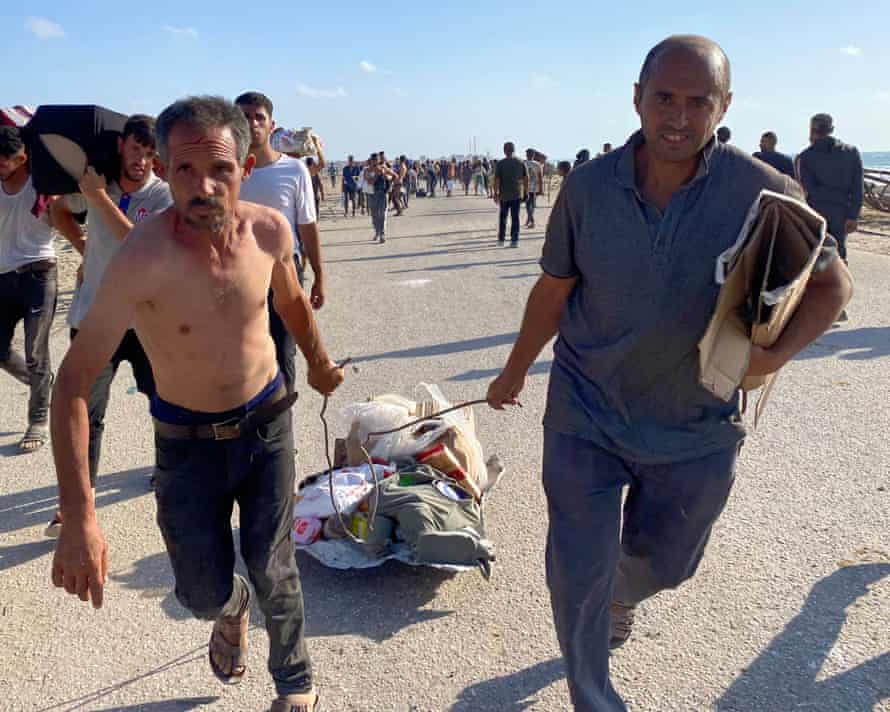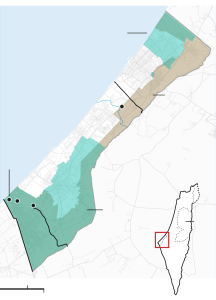At least one Palestinian civilian has been killed and 48 others wounded after Israeli troops opened fire on a crowd at a food distribution site in Gaza on Tuesday, according to local health officials.
The incident occurred after the Gaza Humanitarian Foundation (GHF), a group newly authorised by Israel to manage food distribution, lost control of its compound amid a surge of desperate civilians.
Witnesses described scenes of panic and desperation as hundreds of Palestinians, many of them women and children, breached the fencing surrounding the GHF’s Secure Distribution Site (SDS) in Rafah. In one widely circulated video, frightened civilians are seen trampling fences and fleeing as gunshots rang out and an Israeli helicopter fired flares overhead.
Ajith Sunghay, head of the UN human rights office for the Palestinian territories, confirmed that most of the injuries were caused by gunfire. Gaza’s health ministry said at least one person had died in the chaos.
The Israeli military claimed it had only fired “warning shots” to regain control of the situation and denied deliberately firing at civilians. But aid groups and human rights monitors quickly condemned the escalation, calling it the latest failure in a deeply flawed aid strategy.
“This new aid model is chaos masquerading as humanitarianism,” said Philippe Lazzarini, head of UNRWA, the UN agency for Palestinian refugees. “We already have a distribution system that works. What’s happening now is a deliberate distraction from atrocities and a misuse of precious resources.”
The GHF, a U.S.-backed organisation recently tasked with coordinating food aid, admitted in a statement that its staff had been overwhelmed and forced to abandon their posts as crowds swelled. “At one moment in the late afternoon, the volume of people at the SDS was such that the GHF team fell back to allow a small number of Palestinians in Gaza to take aid safely and dissipate,” the statement read.
The situation in Gaza has grown increasingly dire. Israel imposed a full blockade on aid supplies in March, alleging that Hamas was diverting food for its fighters, an accusation the group denies. The blockade, now in its 11th week, has pushed Gaza to the brink of famine.
According to the IPC, a global hunger monitor, nearly half a million people in Gaza are at risk of starvation, with close to 71,000 children under the age of five expected to be acutely malnourished, including 14,100 cases deemed severe in the coming months. UN-operated bakeries have shut down due to fuel shortages, and food prices have soared beyond affordability for most families.
On Sunday, Jake Wood, founding director of the Gaza Humanitarian Foundation, resigned, citing the impossibility of operating under current conditions while upholding humanitarian principles. “Delivering aid under these terms undermines neutrality, humanity, and independence,” he said.
Critics argue the new distribution system is not only inadequate but dangerous. Aid organisations, including ActionAid, have refused to cooperate with the GHF, warning that the model effectively turns food aid into a weapon of war.
“Aid that is used to mask ongoing violence is not aid,” a coalition of NGOs said in a joint statement earlier this month. “It is humanitarian cover for a military strategy of control and dispossession.”
Prime Minister Benjamin Netanyahu acknowledged the incident on Tuesday, saying there had been “some loss of control momentarily,” but claimed that Israeli forces had quickly stabilized the situation. He reiterated plans to relocate Gaza’s civilian population to a “sterile zone” in the south as Israeli forces continue operations against Hamas elsewhere in the territory.
The United Nations and its partners continue to call for unfettered humanitarian access and an immediate end to the blockade. “The clock is ticking towards famine,” Lazzarini warned. “Let humanitarian actors do their life-saving work now before it’s too late.”




